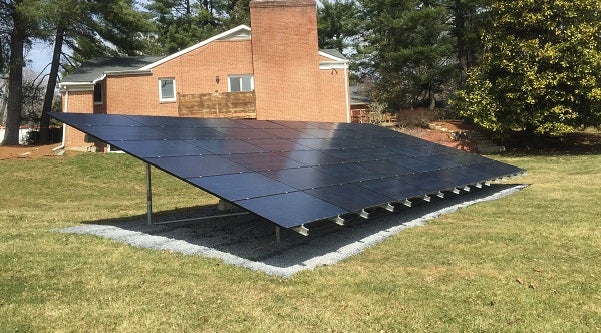High energy costs a burden for many Marylanders

Defining energy affordability
So what is affordable? The Home Energy Affordability Gap study, a multi-year, nationwide analysis of energy costs defines affordable energy as 6% of gross household income. According to the study, in 2016 “more than 106,000 Maryland households live with income at or below 50% of the Federal Poverty Level and face a home energy burden of 36%. More than 110,000 additional Maryland households live with incomes between 50% and 100% of the Federal Poverty Level and face a home energy burden of 19%.”
So, more than 200,000 Marylanders have energy costs that make up between 19% and 36% of their gross household income. If you expand that to Marylanders making less than 200% of the Federal Poverty Level ($49,200 for a family of four) there are more than 500,000 Marylanders for whom energy is unaffordable.
What happens when energy is unaffordable?
For many Maryland residents, energy is simply unaffordable. More than half a million (PDF) Marylanders struggle to pay their monthly energy bill. Solar energy can provide a solution.
Paying for energy, whether it’s for electricity or heat, is a critical expenditure for households along with the cost of housing, food, and medicine. When income doesn’t stretch to cover all of these expenses for a month, people are forced to choose which bill does not get paid. If a homeowner needs electricity for medicines or other on-site medical equipment, losing electricity is potentially a life and death issue. Expensive energy also contributes to the instability of household finances that sometimes lead to evictions.

When energy is unaffordable it contributes to the societal costs we all bear in dealing with health care costs, eviction proceedings, and other poverty-related circumstances. In effect, we all pay twice for energy. We pay once on our bills and again through public programs to support those directly impacted by energy they can’t afford.
How solar can help
Solar is not the entire answer, but it can make a real impact. Dealing with energy affordability means applying public and private means to help those affected pay their bills with such programs as LIHEAP (Low Income Home Energy Assistance Program) and Maryland’s Electric Universal Service Program. It also means proactively lowering the demand for energy through initiatives like the Maryland EmPOWER program that helps residents and businesses improve energy efficiency by retrofitting their buildings and replacing inefficient appliances.
In addition to these measures, access to rooftop solar and community solar can reduce the cost of some or all of a home’s energy for the long-term by fixing the cost of that energy at or below the current utility cost of electricity. When community solar offerings become available in many parts of Maryland later this year state residents will have one more option to make energy more affordable for them and their families. One key question is whether this program will work for all Marylanders.
The community solar pilot program is structured to encourage projects that include Maryland low- and moderate-income residents. Unfortunately, it’s a challenge for developers to include low- and moderate-income customers for a number of reasons including financing due to the perceived credit risk they represent. Because of these challenges, it remains to be seen whether Maryland’s low- and moderate-income residents will be able to fully access the savings many expect community solar to deliver to participating customers.
